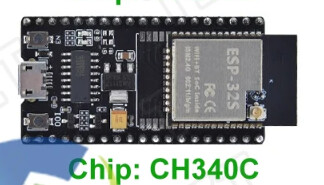Merci pour les pistes
ENFIN , j'ai trouvé une config qui fonctionne pour l'affichage
Avec le code joint cela donne ça (c'est pas le top du design mais c'est un début)

Pour le tactile, je ne comprends pas comment me connecter avec TouchScreen, je suis preneur d'un exemple basique
[code]
/**************************************************************************
This is a library for several Adafruit displays based on ST77* drivers.
This example works with the 1.14" TFT breakout
----> https://www.adafruit.com/product/4383
The 1.3" TFT breakout
----> https://www.adafruit.com/product/4313
The 1.47" TFT breakout
----> https://www.adafruit.com/product/5393
The 1.54" TFT breakout
----> https://www.adafruit.com/product/3787
The 1.69" TFT breakout
----> https://www.adafruit.com/product/5206
The 1.9" TFT breakout
----> https://www.adafruit.com/product/5394
The 2.0" TFT breakout
----> https://www.adafruit.com/product/4311
Check out the links above for our tutorials and wiring diagrams.
These displays use SPI to communicate, 4 or 5 pins are required to
interface (RST is optional).
Adafruit invests time and resources providing this open source code,
please support Adafruit and open-source hardware by purchasing
products from Adafruit!
Written by Limor Fried/Ladyada for Adafruit Industries.
MIT license, all text above must be included in any redistribution
**************************************************************************/
#include <Adafruit_GFX.h> // Core graphics library
#include <Adafruit_ST7789.h> // Hardware-specific library for ST7789
#include <SPI.h>
//#include <TouchScreen.h>
//Pour ESP32
#define TFT_CS 5
#define TFT_RST 15
#define TFT_DC 32
// OPTION 1 (recommended) is to use the HARDWARE SPI pins, which are unique
// to each board and not reassignable. For Arduino Uno: MOSI = pin 11 and
// SCLK = pin 13. This is the fastest mode of operation and is required if
// using the breakout board's microSD card.
Adafruit_ST7789 tft = Adafruit_ST7789(TFT_CS, TFT_DC, TFT_RST);
void setup(void) {
Serial.begin(9600);
Serial.print(F("Hello! ST77xx TFT Test"));
// OR use this initializer (uncomment) if using a 2.0" 320x240 TFT:
tft.init(240, 320); // Init ST7789 320x240
// SPI speed defaults to SPI_DEFAULT_FREQ defined in the library, you can override it here
// Note that speed allowable depends on chip and quality of wiring, if you go too fast, you
// may end up with a black screen some times, or all the time.
//tft.setSPISpeed(40000000);
Serial.println(F("Initialized"));
uint16_t time = millis();
tft.fillScreen(ST77XX_BLACK);
time = millis() - time;
Serial.println(time, DEC);
delay(500);
tft.invertDisplay(false);
delay(500);
tft.fillScreen(ST77XX_BLACK);
//Titre
tft.setCursor(25, 0);
tft.setTextColor(ST77XX_WHITE);
tft.setTextSize(2);
tft.setTextWrap(true);
tft.print("CHOISIR CASIER");
//Bouton1
tft.fillRoundRect(6, 30, 70, 60, 10,ST77XX_BLUE );
tft.setCursor(32,47);
tft.setTextSize(3);
tft.print("1");
//Bouton2
tft.fillRoundRect(86, 30, 70, 60, 10,ST77XX_YELLOW );
tft.setCursor(112,47);
tft.setTextSize(3);
tft.print("2");
//Bouton3
tft.fillRoundRect(166, 30, 70, 60, 10,ST77XX_RED );
tft.setCursor(192,47);
tft.setTextSize(3);
tft.print("3");
//Bouton4
tft.fillRoundRect(6, 100, 70, 60, 10,ST77XX_RED );
tft.setCursor(32,117);
tft.setTextSize(3);
tft.print("4");
//Bouton5
tft.fillRoundRect(86, 100, 70, 60, 10,ST77XX_GREEN );
tft.setCursor(112,117);
tft.setTextSize(3);
tft.print("5");
//Bouton6
tft.fillRoundRect(166, 100, 70, 60, 10,ST77XX_MAGENTA );
tft.setCursor(192,117);
tft.setTextSize(3);
tft.print("6");
delay(5000);
}
void loop() {
}
[/code]




